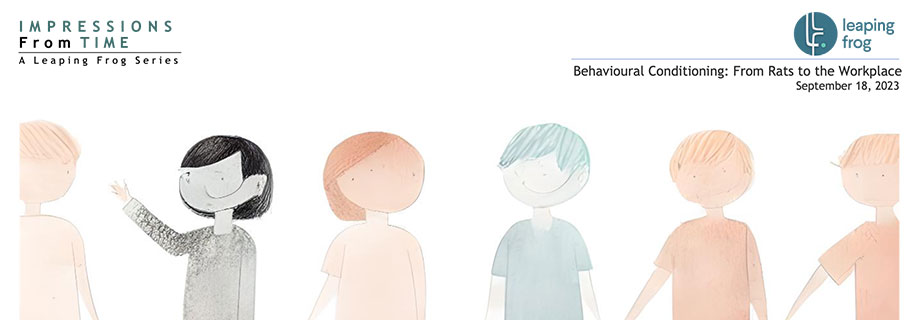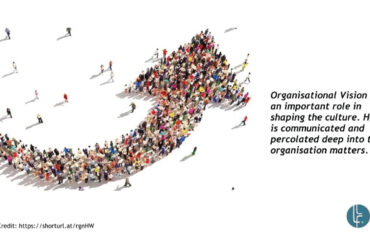
Behavioural Conditioning: From Rats to the Workplace
During the era of behaviourist psychology (late 18th and early 19th century), psychologists had the inkling that rewards and punishments played a pivotal role in moulding and motivating voluntary human behaviour. However, to transform this hypothesis into a verifiable theory, they required a systematic method of investigation. This was the period of the Theory of Classical Conditioning (Ivan Pavlov) and the Law of Effect (Edward Thorndike). Thorndike’s Law of Effect said – “responses that produce a satisfying effect in a particular situation become more likely to occur again in that situation, and responses that produce a discomforting effect become less likely to occur again in that situation.”
Under such narrative entered Burrhus Frederic Skinner (B. F. Skinner), the ingenious mind behind the research – Skinner Box Experiment and created the device known as Skinner’s Box. His research forged a path toward a more comprehensive understanding of how external incentives and penalties shape and stimulate voluntary behaviours, etching a memorable chapter in the annals of scientific history.
Positive Reinforcement
In his initial experiment, B.F. Skinner introduced a hungry rat into the Skinner box (a device where animal experiments are conducted). At first, the rat gradually explored its surroundings and stumbled upon a lever that, when pressed, released food. The lever-pressing behaviour became ingrained as the rat repeated this action to satisfy its hunger. This process, termed operant conditioning, highlighted how actions (lever-pressing) could be shaped through rewards (food). It exemplified positive reinforcement, where the reward strengthened the behaviour. This “Instrumental Conditioning Learning” experiment unveiled the profound role of rewards and behaviours, marking a crucial milestone in psychology’s understanding of voluntary actions.
Negative Reinforcement
In another experiment, B.F. Skinner explored negative reinforcement by subjecting a rat to an uncomfortable electric current in a chamber. In a bid to escape the discomfort, the distressed rat accidentally pressed a lever that promptly halted the electric current. Over time, the rat learned to go straight to the lever to avert the discomfort, demonstrating negative reinforcement. Here, pressing the lever served as the operant response, with the cessation of the electric current acting as the rewarding consequence, highlighting how avoidance behaviours can be shaped through negative reinforcement.
In simple terms, this research showed that the outcomes of our actions affect how often we do those actions. If we get rewarded for something, we will likely do it again. Conversely, if we face punishment for something, we’re less likely to do it in the future.
The Organisational Context
In the field of organisational psychology, B.F. Skinner’s experiments may seem distant from the complexities of corporate life. However, his insights into operant conditioning reveal a profound revelation: an organisation’s environment significantly shapes human behaviour.
Skinner’s pioneering work underscores a fundamental truth – people’s intrinsic behaviour remains relatively consistent. However, the external conditions and the organisational environment act as catalysts for specific behaviours.
Within organisations, positive reinforcement, like recognition, care, appreciation, a sense of inclusion and belonging, rewards, and incentives, proves a powerful tool for shaping employee behaviour. When these incentives are consistently and fairly applied, organisations can motivate employees to excel, innovate, and collaborate.
Immediate feedback and rewards expedite learning and skill acquisition without fundamentally altering individuals’ nature.
The organisational environment is the canvas on which behaviours are painted. Workplace safety, change management, and conflict resolution all find relevance here. By applying Skinner’s principles, organisations can design environments promoting safety, facilitating transitions, and fostering collaboration, all while recognising individuals’ intrinsic behaviours.
Furthermore, organisational culture, employee well-being, and leadership styles derive their character from the cultivated environment. Skinner’s insights emphasise consistency in reinforcing behaviours aligned with the desired culture, creating an ethos reflecting the organisation’s values.
In this blend of psychology and organisational dynamics, Skinner’s experiments unveil a profound truth – people’s essence remains relatively unchanged. Instead, the organisational environment impacts behaviours, guiding individual inclinations into cohesive patterns. By intentionally crafting this environment with ethical consideration, organisations can inspire and steer their people toward enhanced productivity, innovation, and harmony. Skinner’s experiments, starring unlikely heroes, illuminate the intricate dance between the human psyche and the organisational stage.
“Impressions From Time” is a curated series from Leaping Frog, about stories from the yesteryears that have helped shape the modern-day practices in the people and organisation domain.
Leaping Frog, a new-age consulting firm, is an enabler and co-creator in enhancing people and organisational effectiveness. We love doing work in the areas of “Driving Organisational Change and Development”, “HR Systems and Talent Strategy”, and “Leadership and Life Coaching”.
Connect and share, for work and more.
Mail: comm@leapingfrog.in
Website: www.leapingfrog.in
Follow Us: https://www.linkedin.com/company/theleaping-frog/




